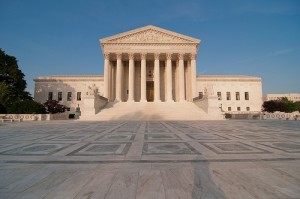26 Jun Can You Hear Me Now: Supreme Court Rules Cell Phone Privacy Isn’t Dead
Supreme Court watchers love technology cases. Technology is for the young, so the cliché goes, and the youngest Justices are middle age. Court watchers speculate, will the Justices even understand the technology they are ruling? Justice Robert’s 28-page opinion in Riley v. California, discussing encryption, apps, and cloud computing, reads like a primer on how cell phones work. The Court held unanimously that generally police must first obtain a warrant before searching an arrested person’s cellphone.
Technology is for the young, so the cliché goes, and the youngest Justices are middle age. Court watchers speculate, will the Justices even understand the technology they are ruling? Justice Robert’s 28-page opinion in Riley v. California, discussing encryption, apps, and cloud computing, reads like a primer on how cell phones work. The Court held unanimously that generally police must first obtain a warrant before searching an arrested person’s cellphone.
Police searched David Riley’s cell phone after he was arrested on gun charges and found evidence of gang activity. In a second case, police arrested Brima Wurie for selling drugs and used his cell phone to figure out where he lived—where they found more drugs and guns.
The Fourth Amendment requires police to obtain a warrant before they conduct a search unless an exception applies. The exception at issue in this case is a search incident to a lawful arrest.
In the 1969 case of Chimel v. California the Court identified two factors that justify an officer searching an arrested person: officer safety and preventing the destruction of evidence. Four years later in United States v. Robinson the Court held that police could search a cigarette pack found on Robinson’s person despite the absence of these two factors. The Court noted that “[h]aving in the course of a lawful search come upon the crumpled package of cigarettes, [the officer] was entitled to inspect it.”
The Court declined to extend Robinson to searches of data on cell phones. Applying the first Chimel factor the Court observed that “[d]igital data stored on a cell phone cannot itself be used as a weapon to harm an arresting officer or to effectuate the arrestee’s escape.” The Court also was not convinced that destruction of data through remote wiping (third party deletion of all data) or data encryption (an unbreakable password) were prevalent problems. Even if they were, law enforcement could address both of them.
To the argument that cell phones are “materially indistinguishable” from other items on an arrestee’s person that lower courts have allowed police to search without warrants, like wallets and purses, the Court responded: “That is like saying a ride on horseback is materially indistinguishable from a flight to the moon. Both are ways of getting from point A to point B, but little else justifies lumping them together.” Cell phones are “minicomputers” with an “immense storage capacity.”
The Court readily admitted that its decision will impact law enforcement’s ability to combat crime. But the Court reminds readers that privacy comes at a cost and warrants are faster and easier to obtain now than ever before. And the Court stated that the exigent circumstances exception may justify a warrantless search, for example, “to prevent the imminent destruction of evidence in individual cases, to pursue a fleeing suspect, and to assist persons who are seriously injured or are threatened with imminent injury.”
This case will be discussed in the State and Local Legal Center’s (SLLC) FREE Supreme Court Review CLE webinar, register here, and the SLLC’s FREE Supreme Court Police Cases webinar, register here.
Image courtesy of Flickr by Mark Fischer (creative-commons license, no changes made).



